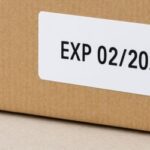Making Near-Shoring Work: How to Transition Medical Device Manufacturing with a Soft Landing
Intro
Over the past few years, I’ve watched a major shift take shape in medical device manufacturing. More and more companies are rethinking where and how they produce their products. For a long time, overseas manufacturing was the default. Today, OEMs are increasingly seeking more control, less risk, and faster paths from concept to customer. Near-shoring answers that need.
However, relocating operations back to the U.S. or closer to it is not simple. When rushed or poorly planned, the transition introduces costly risks. That’s why, at Life Science Outsourcing, we take a thoughtful, proven approach to near-shoring transitions. We call it a soft landing.
Let me walk you through what that really means — and why it matters.
Why Near-Shoring Is Catching Fire
This shift is no longer optional for many OEMs. Global instability, long lead times, and unpredictable shipping costs have made offshore manufacturing increasingly unsustainable. Add mounting regulatory pressure for traceability, and companies are left with a clear imperative: bring operations closer to home.
Near-shoring offers shorter supply chains, faster turnaround, and greater oversight. However, that only comes with precision and care.
What Happens When You Rush It
We’ve seen companies attempt to move too fast, pulling production back all at once in hopes of quick wins. Unfortunately, this often backfires. Production stalls. Tech transfers drag. Validations fall through. Regulatory submissions are delayed. What was meant to be a competitive advantage becomes a costly disruption.
That is the risk of a hard landing.
So What Is a Soft Landing?
A soft landing is about preparation and precision before the move begins. It is a guided, collaborative process that minimizes disruption and protects compliance at every stage.
Think of it as stepping into a turnkey facility — fully validated, equipped, and staffed so production can begin immediately without delays or unnecessary complexity. At LSO, our cleanrooms, manufacturing cells, and sterilization lines are ready to support your products from day one, backed by experienced teams who understand your requirements and regulatory obligations.
But a soft landing is more than infrastructure. It requires detailed planning, defined milestones, and close coordination to ensure uninterrupted quality, documentation, and delivery throughout the transition.
What Makes This Work?
Honestly, it starts with early conversations. When we sit down with a client, we’re not just talking timelines and production volumes. We’re aligning on regulatory expectations, engineering requirements, and the realities of your current supply chain. From there, we design a step-by-step path forward.
An important part of this process is the close coordination between our U.S.-based Manufacturing and NPI Team and our near-shore operations. This collaboration ensures that processes are not only transferred efficiently, but are also properly implemented, validated, and tracked using a robust transition checklist. Our team includes bi-lingual subject matter experts who help facilitate seamless communication between sites — particularly important when transferring production to regions like Costa Rica. This ensures that nothing is lost in translation and that your product transfer remains on track and compliant from day one.
Because we already have FDA-registered, ISO-certified facilities and validated sterilizers ready to go, we’re able to move quickly — without cutting corners. Our team takes ownership of everything from packaging development to IQ/OQ/PQ, and we stay closely connected with your internal teams to make sure nothing gets lost in translation.
And because we offer all of this under one roof — assembly, packaging, sterilization, validation, and logistics — we remove the need to juggle multiple vendors or worry about inconsistent documentation.
Real Results, Real Speed
Not long ago, we helped an orthopedic device manufacturer transition their implant kits from Southeast Asia to our facility in California. They were nervous about downtime and re-validation delays, but through a carefully phased soft landing, we had them fully operational — and FDA inspection-ready — in under four months. No missed shipments. No surprises.
That’s the power of doing it right the first time.
The Long-Term Payoff
The benefits of a soft landing go well beyond the initial move. You gain speed to market. You get closer collaboration with your contract manufacturing partner. And most importantly, you get peace of mind knowing your regulatory foundation is strong and your operations are stable.
At LSO, we believe transitions shouldn’t be painful. They should be opportunities — to streamline, to improve, and to grow. A soft landing is how we help our clients make that happen.
Ready to Talk?
If you’re thinking about near-shoring your medical device operations, let’s connect. We’d be happy to walk you through our approach and show you how we can help you land softly — and scale confidently.





